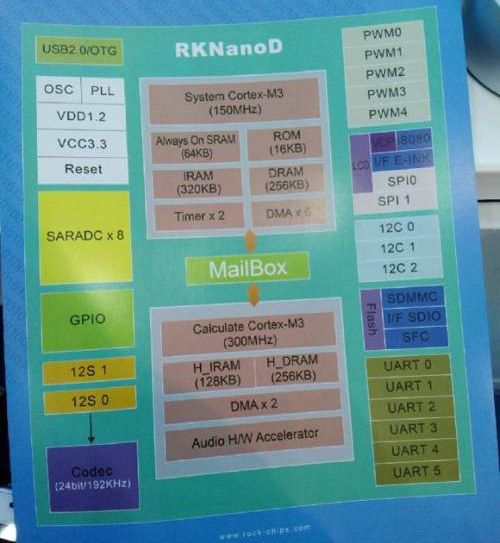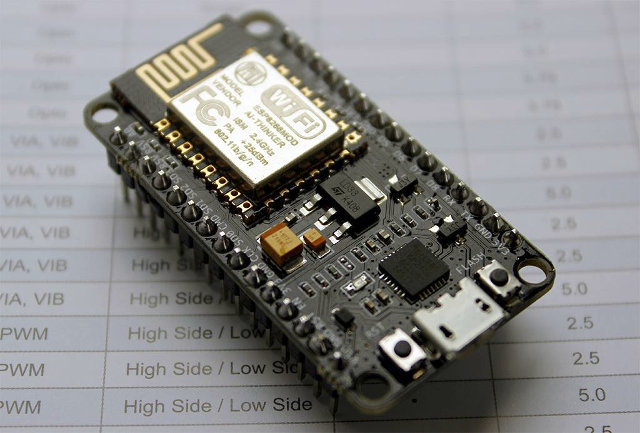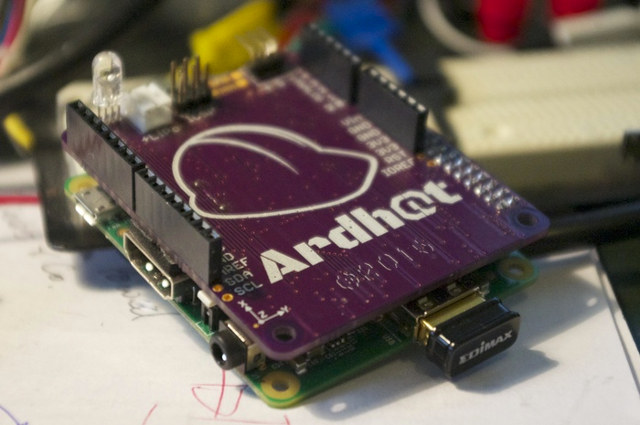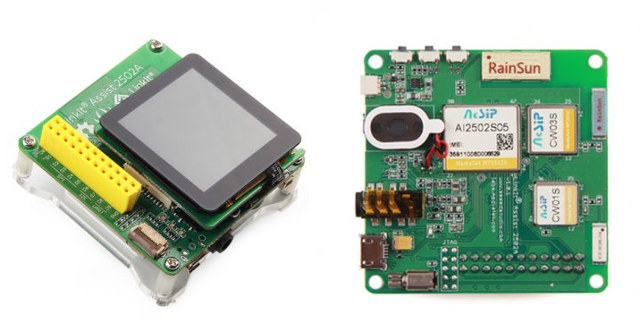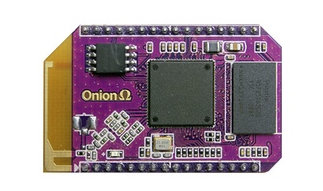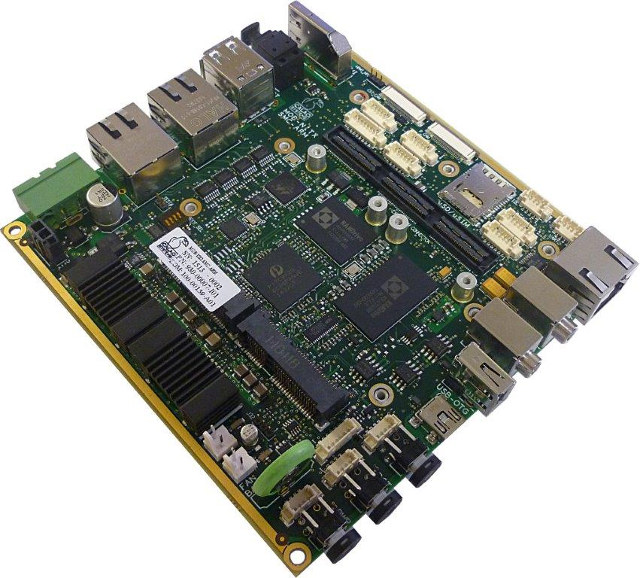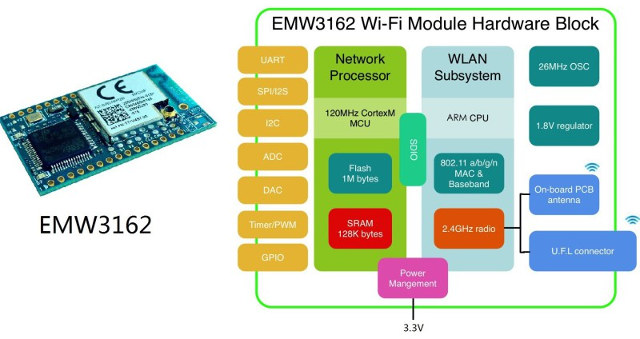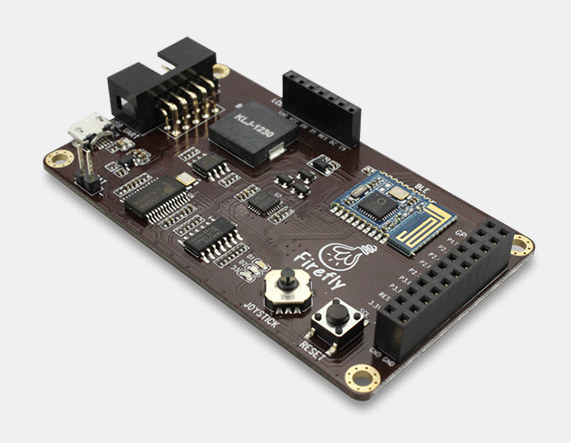Rockchip is better known for their application processor like RK3188 or RK3288 found in tablets and mini PCs, but the company is also making lower power SoCs such as RKNanoC Cortex M3 micro-controller used in wireless audio applications, and more recently Rockchip demonstrated RKNanoD, a dual core Cortex M3 micro-controller for IoT and high-definition audio applications. Some key specifications and features of RKNanoD MCU: Cores ARM Cortex M3 @ 150 MHz with 64KB SRAM, 16KB RAM, 320KB iRAM, 256KB DRAM for system. ARM Cortex M3 @ 300 MHz with 128KB iRAM, 256 KB DRAM, and an audio H/W accelerator for compute tasks like audio decoding. Storage I/F – Flash, SDMMC, SDIO, SFC Display I/F – LCD, E-Ink Audio – 2x I2S, 24-bit / 192 KHz audio codec USB – USB 2.0 OTG Other I/Os – GPIO, 6x UART, 2x SPI, 3x I2C, 5x PWM, 8x SARADC 8x DMA, 2x Timers […]
NodeMCU is both a Breadboard-Friendly ESP8266 Wi-Fi Board and a LUA based Firmware
NodeMCU is a LUA based interactive firmware for Expressif ESP8622 Wi-Fi SoC, as well as an open source hardware board that contrary to the $3 ESP8266 Wi-Fi modules includes a CP2102 TTL to USB chip for programming and debugging, is breadboard-friendly, and can simply be powered via its micro USB port. Let’s checkout the hardware first. The latest version of the board (V1.0) has the following specifications and features: Wi-Fi Module – ESP-12E module similar to ESP-12 module but with 6 extra GPIOs. USB – micro USB port for power, programming and debugging Headers – 2x 2.54mm 15-pin header with access to GPIOs, SPI, UART, ADC, and power pins Misc – Reset and Flash buttons Power – 5V via micro USB port Dimensions – 49 x 24.5 x 13mm The hardware documentation for the board can be found on nodemcu-devkit repo, including schematics and PCB layout designed with Altium Designer, […]
ARDHAT adds Arduino Shield Compatibility, an ISM Band Radio to Raspberry Pi and ODROID-C1 Boards (Crowdfunding)
NinjaBlocks created Pi Crust add-ons board adding a 433MHz radio and Arduino compatibility to the Raspberry Pi Model A & B a few years ago, but the product has since been removed from their store. But a startup called ubIQio has now created a similar product compatible with Raspberry Pi Model A+, B+ and B2, as well as ODROID-C1 which also comes with a 40-pin R-Pi header. The ARDHAT board is a HAT compatible add-on board with an Atmel MCU, Arduino headers, as well as an optional long range mesh ISM radio (433, 868 and 915 MHz) and various sensors. There are four versions of the board: Basic Ardhat, Ardhat-I, and Ardhat-W and Ultra, which share the following specifications: MCU – Atmel MCU @ 16MHz Headers and I/Os Arduino compatible header accepting 5V Arduino shields 12 ch PWM O/P, 6 ch analog I/P Real-time Clock Programmable Power/Navigation combo switch Programmable […]
Mediatek LinkIt Assist 2502 Open Source Hardware Board Targets Wearables and IoT Applications
After LinkIt ONE, Mediatek Labs has introduced a new IoT development kit based on their Aster M2502 ARM7 processor with LinkIt Assist 2502 comprised of AcSiP MT2502A IoT SiP Core module, a 802.11b/g/n module, a GNSS module, and an exchangeable 240×240 16-bit color capacitive touch LCM Board. The AcSiP module can also be purchased separately, so you could use LinkIt Assist 2502 board for early development, because moving to your custom hardware based on AcSiP MT2502A module. LinkIt Assist 2502A specifications: MCU – AcSiP AI2502S05 module with MT2502A (Aster) ARM7 EJ-STM processor @ 260MHz, 4MB RAM, 16MB flash Display – 240×240 LCD module; 16-bit color depth; transflective; based on ST7789S driver IC. Connectivity Wi-Fi 802.11 b/g/n via AcSiP CW01S module based on MT5931 SoC Bluetooth 2.1 SPP and 4.0 GATT dual mode (part of MT2502A) GPS via AcSiP CW03S module based on MT3332 chip supporting GPS, GLONASS, and BeiDou. GSM […]
Onion Omega is an Atheros AR9331 Wi-Fi Module Supporting Various Docks and Add-on Boards (Crowdfunding)
There are so many inexpensive Wi-Fi modules running Linux that it would be easy to discard Onion Omega as yet another Wi-Fi module based on Atheros AR9331 WiSoC. However, the developers have tried to bring some added value by making programming easier for web developers, integrating it with a cloud platform (free for non-commercial use), and providing basicor Arduino dock, and add-on boards for Ethernet, OLED, Relay… to make building hardware projects easier too. Let’s go through the hardware first, starting with the module specifications: SoC – Atheros AR9331 400MHZ MIPS 24K System Memory – 64MB DDR2 400MHz Storage – 16MB Flash Connectivity – 10/100 Mbps Ethernet + 802.11b/g/n Wi-Fi up to 150Mbps with PCB antenna w/ uFL connector I/Os – 18 GPIOs USB – 1x USB 2.0 Power Supply – 3.3V; Typ. consumption: 0.6W Dimensions – 28.2mm x 52mm (1.1″ x 2.0″) Since this type of module is not […]
Baseball Nano-ITX i.MX6 Board Targets Secure Industrial M2M and IoT Products
Calao Systems has introduced a new Freescale i.MX6 single board computer with Baseball embedded platform, targetting network-connected industrial M2M and Internet of Things (IoT) applications requiring a high-level of security achieved with an FIPS 140-2 trusted platform module, and Crypto Authentication chip. The board is comprised of a Nano-ITX based board and a Freescale.iMX6 (Solo, Dual or Quad) SMARC 1.1 module with the following combined specifications: SoC – Freescale iMX6 Solo, Dual or Quad Cortex A9 processor @ up to 1GHz with Vivante GPU System Memory – 2 GB DDR3L, Storage On Module: 8 GB e-MMC, 8 MB SPI Flash, 1x EEPROM with unique S/N and MAC address On Baseboard: 1x Micro-SD socket, 1x Industrial Grade eMMC NANDrive (optional), 1x Industrial Grade SATA Nandrive (optional), Video Output – HDMI Audio Output – HDMI and optical S/PDIF Connectivity – 2x Gigabit Ethernet, 1x SIM card slot USB – 3x USB 2.0 […]
MXCHIP EMW3162 is a $10 Low Power Wi-Fi Module for IoT Applications
You can’t beat ESP8266 Wi-Fi modules on price to add Wi-Fi to your IoT projects, but Hackaday found a new Wi-Fi module by Shanghai MXCHIP Information Technology that sells for $10 on Seeed Studio or Amazon US, that should be better suited to battery operated project thanks to a lower power consumption. EMW3162 also features a more powerful STM32F205 cortex M3 micro-controller, as well as more I/Os than ESP8266. Specifications for EMW3162 Wi-Fi module: MCU – STM32F2 Cortex M3 MCU @ 120 MHz with 128KB RAM, 1MB flashOn Wi-Fi connectivity 802.11b, 802.11g, 802.11n (single stream) on channel 1-14 @ 2.4GHz WEP, WPA/WPA2 PSK/Enterprise (hardware encryption) Transmit power: 18.5dBm@11b; 15.5dBm@11g; 14.5dBm@11n MIN Receiver Sensitivity: -96 dBm Max Data rate: 11Mbps@11b; 54Mbps@11g; 72Mbps@11n HT20 Wi-Fi modes: Station, Soft AP and Wi-Fi direct Advanced 1×1 802.11n features: Full/Half Guard Interval, Frame Aggregation, Space Time Block Coding (STBC), Low Density Parity Check (LDPC) Encoding […]
Firefly introduces FireBLE Bluetooth Low Energy Board
So just as today I wrote about XBAND BLE Sensor board, the makers of Firefly-RK3288 also announced their own Bluetooth Low Energy board aptly named FireBLE, and also integrating a 6-axis gyroscope and accelerometer, but instead of being based on Nordic or Cypress, the company went with an NXP BLE chip. FireBLE board specifications: SoC – NXP QN9021 ARM Cortex M0 MCU @ 32MHz with 94KB ROM (protocol stack), 64 KB SRAM, 128KB flash Bluetooth – BT 4.0 single mode. Central and peripheral mode with up to 8 simultaneous connections. Sensors MPU-6050 3-axis gyroscope and 3-axis accelerometer with an on-board Digital Motion Processor (DMP) capable of processing 9-axis motion fusion algorithms. Battery and temperature sensor USB – micro USB port for power and programming Expansion – 3 expansion headers with access to SPI, UART, I2C, GPIO, and PWM, as well as OLED display interface. Debugging – JTAG, support SWD online […]


